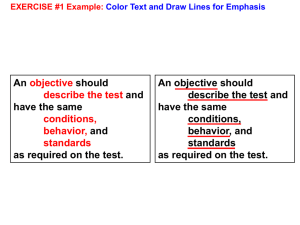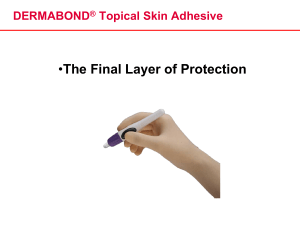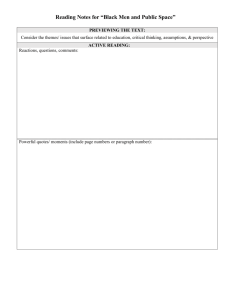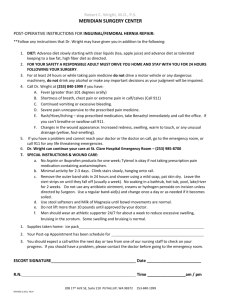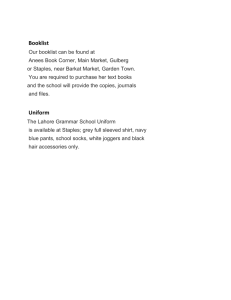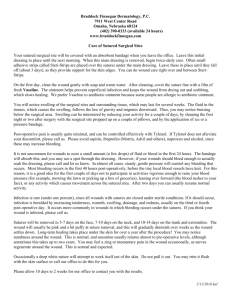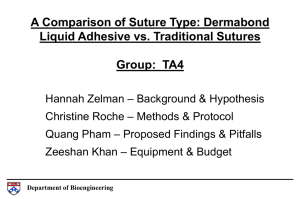Laceration Care
advertisement
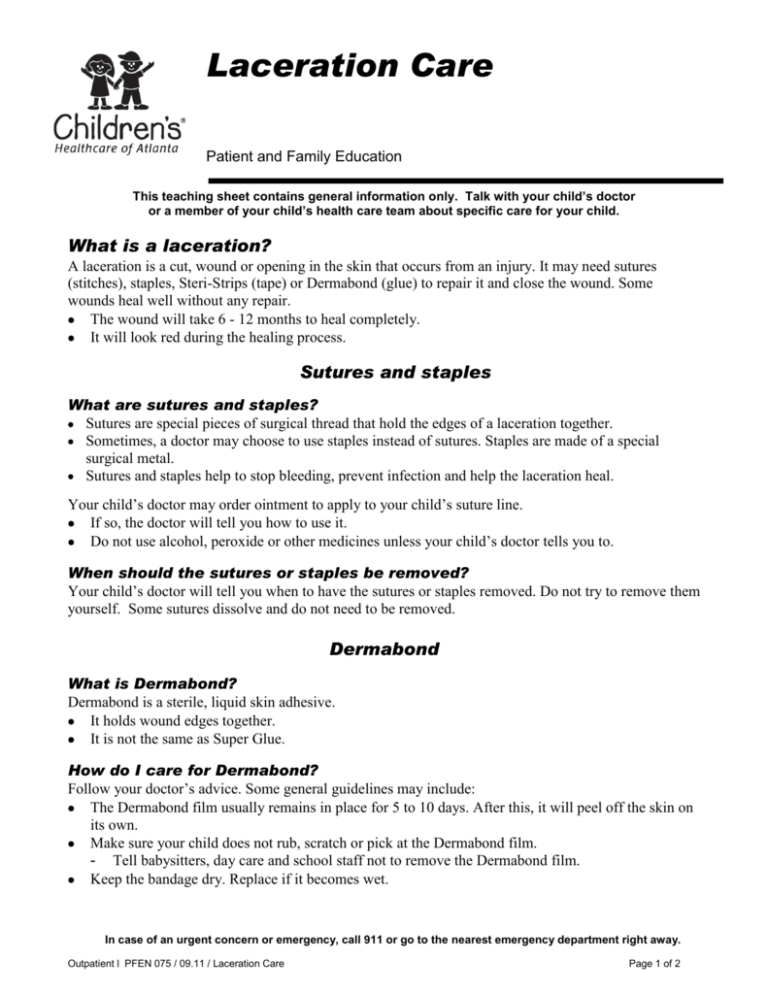
Laceration Care Patient and Family Education This teaching sheet contains general information only. Talk with your child’s doctor or a member of your child’s health care team about specific care for your child. What is a laceration? A laceration is a cut, wound or opening in the skin that occurs from an injury. It may need sutures (stitches), staples, Steri-Strips (tape) or Dermabond (glue) to repair it and close the wound. Some wounds heal well without any repair. The wound will take 6 - 12 months to heal completely. It will look red during the healing process. Sutures and staples What are sutures and staples? Sutures are special pieces of surgical thread that hold the edges of a laceration together. Sometimes, a doctor may choose to use staples instead of sutures. Staples are made of a special surgical metal. Sutures and staples help to stop bleeding, prevent infection and help the laceration heal. Your child’s doctor may order ointment to apply to your child’s suture line. If so, the doctor will tell you how to use it. Do not use alcohol, peroxide or other medicines unless your child’s doctor tells you to. When should the sutures or staples be removed? Your child’s doctor will tell you when to have the sutures or staples removed. Do not try to remove them yourself. Some sutures dissolve and do not need to be removed. Dermabond What is Dermabond? Dermabond is a sterile, liquid skin adhesive. It holds wound edges together. It is not the same as Super Glue. How do I care for Dermabond? Follow your doctor’s advice. Some general guidelines may include: The Dermabond film usually remains in place for 5 to 10 days. After this, it will peel off the skin on its own. Make sure your child does not rub, scratch or pick at the Dermabond film. - Tell babysitters, day care and school staff not to remove the Dermabond film. Keep the bandage dry. Replace if it becomes wet. In case of an urgent concern or emergency, call 911 or go to the nearest emergency department right away. Outpatient l PFEN 075 / 09.11 / Laceration Care Page 1 of 2 Laceration Care, continued - Do not place tape directly over the Dermabond film. Replace the bandage each day until the adhesive film falls off. Do not use any ointments or creams while the Dermabond film is in place. Steri-Strips What are Steri-Strips? Steri-Strips are small adhesive bandages. They are used to close shallow lacerations. They hold the edges of the skin together while it is healing. How should I care for Steri-Strips? Steri-Strips will fall off in about 4 to 5 days. They will curl up at the edges as the wound heals. - Trim the edges of Steri-Strips with scissors as they curl up. Gently remove them with tweezers if they do not come off in 7 days. Pull them off from the outside toward the center. What else do I need to know about caring for my child? If your child has sutures, staples or Steri-Strips, make sure to: Keep them dry for the first 24 - 48 hours or as your doctor directs. - Shower only after the first 24 - 48 hours. Do not soak sutures, staples or Steri-Strips in water. - Pat dry after a shower and do not rub. Keep a bandage over the cut when playing outside. Open the cut to the air when inside. Avoid any activity that could cause him to re-injure the wound. Use extra sunscreen (SPF 25 or greater) in the summer to protect the newly healed skin. Get your child a tetanus shot if not up-to-date. When should I call the doctor? Call your child’s doctor if you notice signs of infection around the cut such as: Increased swelling Increased redness around the wound area or red streaks moving away from it Increased pain Pus or drainage A bad smell from wound Also call if your child has a temperature over 100.3˚ F or if you have any questions or concerns about how your child looks or feels. In case of an urgent concern or emergency, call 911 or go to the nearest emergency department right away. Outpatient l PFEN 075 / 09.11 / Laceration Care Page 2 of 2
